High Fidelity Studies of Turbulent Mixing and Reactive Flows
Latest News FY 2021
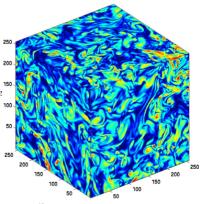
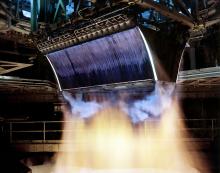
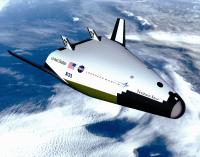
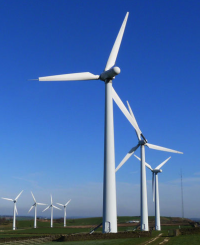
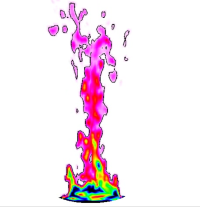
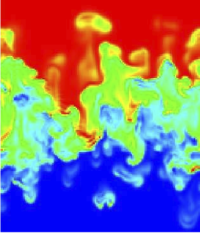

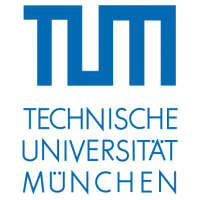
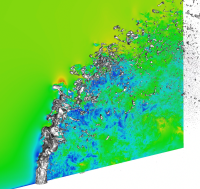
Turbulence Analysis and Simulation Center Inaugurated
1-October-2012. The TASC officially opens its doors, bringing to LLNL state-of-the-art turbulence modeling, simulation and analysis capabilities.
TASC Director Greg Burton is interviewed on YouTube for LLNL's Science & Technology Review, December 2015.
TASC Director Greg Burton discusses TASC's work on the simulation of novel liquid-rocket engines for DARPA, and the impact that HPC may have on the economics of routine space access. Click on the link above to watch the video interview.
The work of the TASC is again discussed on LLNL's Newsline: July 15, 2013
The contribution of the TASC to LLNL's High Performance Computing Innovation Center (HPCIC) is discussed on LLNL's Newsline news service. Click on the link above to read the press release.
The TASC is Featured on LLNL's Newsline: May 6, 2013
The opening of the TASC is a featured story on LLNL's Newsline news service! Click on the link above to read the press release.
Advanced Rocket Engine Design
TASC staff members are studying advanced rocket engine designs for sending small to medium payloads to Low Earth Orbit.
Hypersonic Aerodynamic Design
TASC staff members are exploring aerodynamic loadings for a novel Mach 10 reusable rocket-plane.
Wind Energy
TASC staff members are conducting a verification and validation study of the CGWind large-eddy simulation code, and are developing an immersed boundary method for use in atmospheric turbulence modeling.
Aeroacoustics
The TASC has received funding to study aeroacoustic signatures of objects in the subsonic and transonic regimes.
Passive Scalar Mixing
The TASC has received funding to study passive-scalar mixing in low-Mach number flows in complex geometries.
Particle Aggregation
TASC members are developing advanced numerical methods to study the aggregation and coagulation of weakly diffusive nano-sized particles in environmental flows with BRADY, our advanced incompressible mixing and reaction code that incorporates the nLES Method.
Pool Fires
Using our variable-density code DOOLIN, which incorporates the nLES Method, we are studying the dynamics of instability growth in pool fires, and exploring strategies to extinguish this costly phenomenon generated by a variety of industrial accidents.
Ultra-High Atwood Number Rayleigh-Taylor Mixing
We are continuing work exploring turbulent mixing and transport in extremely challenging ultra-high Atwood-number Rayleigh-Taylor flows using our nLES code DOOLIN.
Droplet Spray and Atomization
We are supporting work led by GE Global Research in collaboration with researchers at Cornell University and Arizona State University to evaluate the newest numerical methods for high fidelity simulation of turbulent spray atomization in massively parallel configurations (Image courtesy M. Herrmann, ASU).
The nLES Method: Development on Unstructured Meshes
We are jointly conducting fundamental research with the Technical University of Munich, Germany to extend the nLES Method to variable-density incompressible, compressible, and wall-bounded problems on unstructured meshes.
Heroic Turbulent Spray Simulation
The TASC has received approval to conduct, in collaboration with researchers at Cornell University, the largest-ever direct numerical simulation of turbulent spray atomization. This landmark simulation will use several hundred thousand cores on LLNL's new VULCAN supercomputer, and will produce the highest resolution dataset ever obtained of spray atomization that will be used to develop more efficient, reliable and safer jet engine designs (Image courtesy O. Desjardins, Cornell).
About the TASC
The Turbulence Analysis and Simulation Center (TASC) is the first-of-its-kind center at LLNL to focus exclusively on the wide range of turbulent reaction, mixing and transport problems that are encountered across many application areas at the Lab. Our staff has combined over 30 years of experience in the study and simulation of turbulent flows. We apply the latest, state-of-the-art large-eddy simulation (LES), Reynolds averaged Navier-Stokes (RANS), and direct numerical simulation (DNS) methods, developed in part with DOE funding through the ASC and PSAAP programs, including the revolutionary nLES Method. We work on projects of all durations, from a few weeks to several years in length. Contact us at tasc [at] llnl.gov (tasc[at]llnl[dot]gov) or burton29 [at] llnl.gov (burton29[at]llnl[dot]gov) to discuss how the TASC may help you with your project involving turbulent combustion, mixing and/or transport.




